I found two legs from an old treadle sewing machine at an old homesite about two miles from the nearest road. I had to leave them onsite because I had my detector and other equipment, and I hadn’t yet had my knee surgery. I came back the next day without the detector and carried these back to the car. A local farmer who did sandblasting on the side cleaned them up for me and I primed and painted them. After some research I decided to make these into a side table and bought a 16” X 36” piece of teak. I wish I had also found the treadle and back panel, but I’m pretty happy with the finished table as it is.
Treadle sewing machines were first patented in 1790, but the first known working model wasn’t made until 1830 in France. In 1846 Elias Howe obtained the first American patent on a sewing machine which made a lock stitch with thread from two sources (the spool and the bobbin). Isaac Singer adopted Howe’s design and the Singer sewing machine was born.
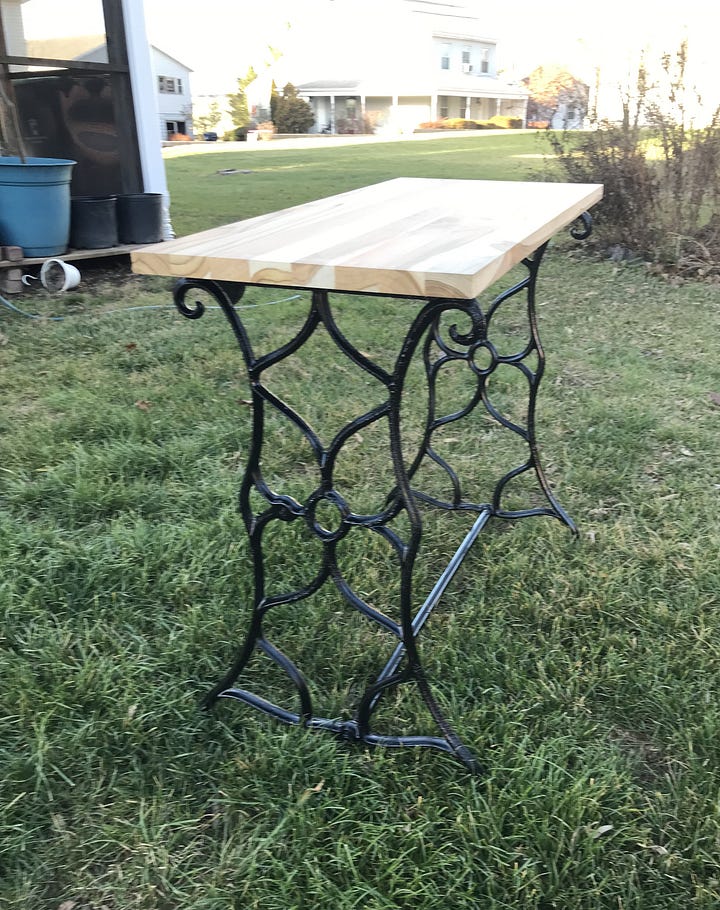
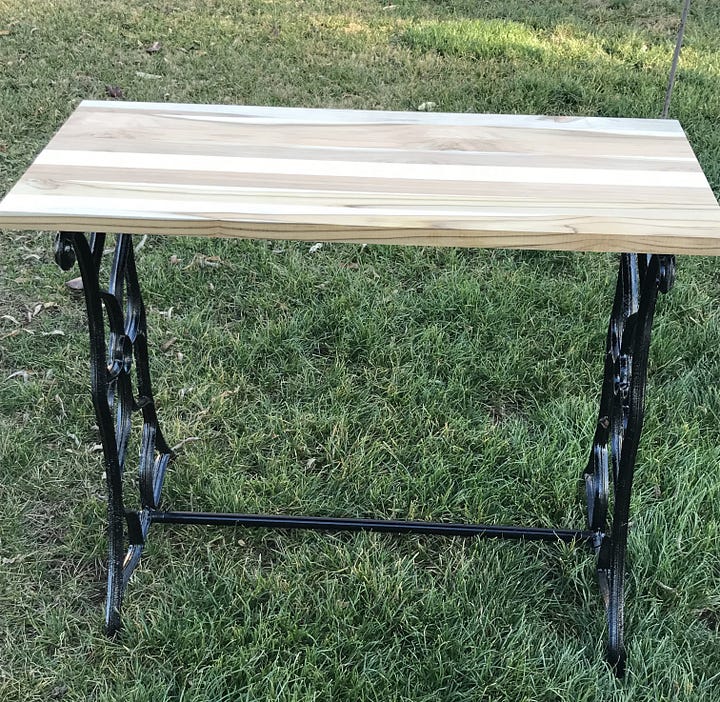
I believe these legs were from an 1870-1910 machine based on other items found in the area and the fact that the house I was detecting was demolished in the early 1930’s. When I swung my detector over these, I got an overload. Normally, I don’t dig overload signals because they are usually large pieces of iron. Even a horseshoe will give an overload. But I decided to dig these because I wasn’t finding much else worth digging.
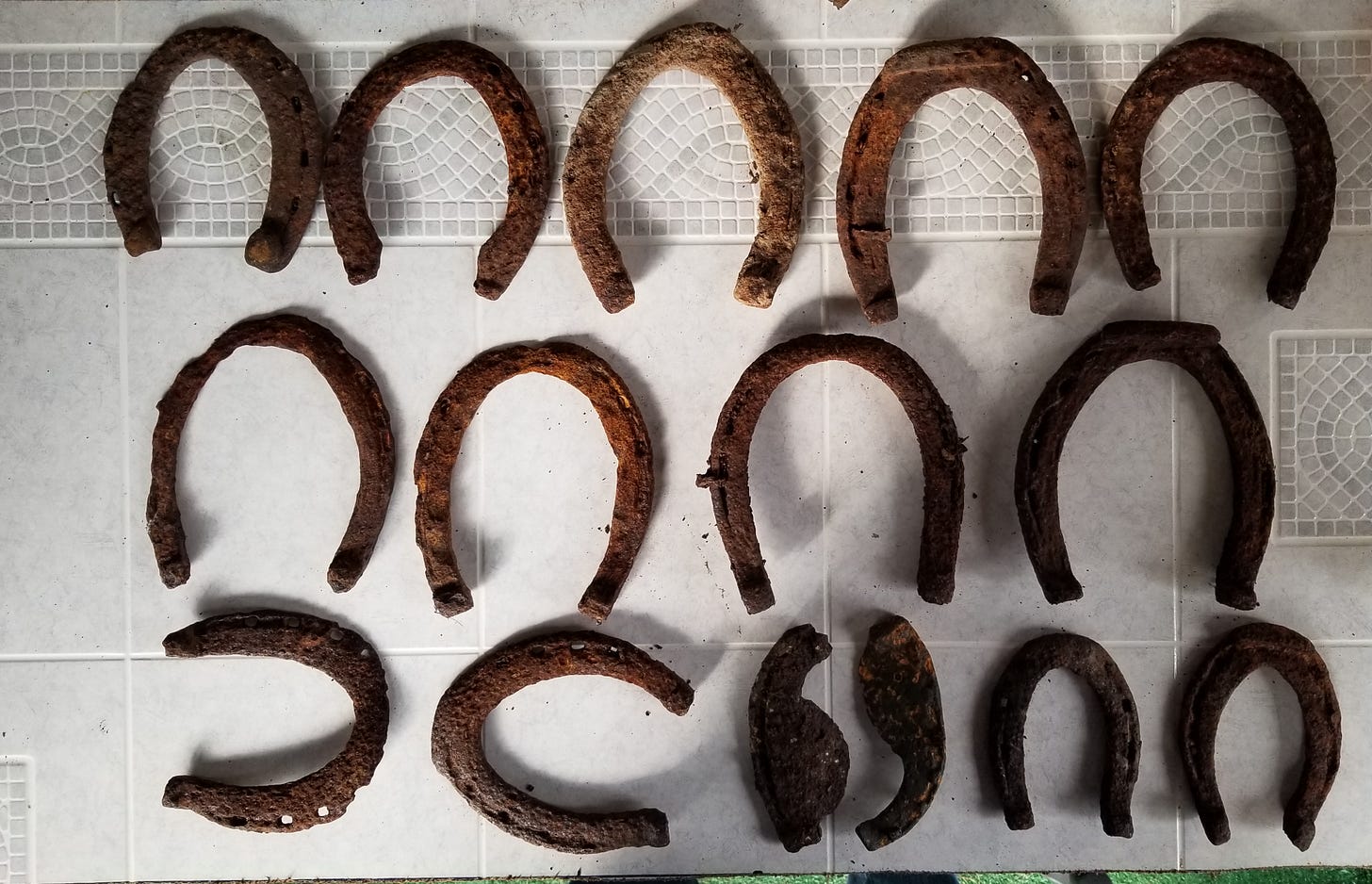
Horseshoes have been in use since at least 400 BC, although the earliest models were made plants, rawhide, or leather and were strapped on rather than nailed. These were called “hipposandals” by the Romans. Around the sixth or seventh century AD metal shoes were invented to help horses in cold climates get traction on icy or snowy terrain, and were generally clipped on or held by straps. Eventually, the iron, steel, and aluminum shoes that we see used today were developed for both horses and mules. These shoes utilize nails driven into the hoof wall to hold the shoes in place, and lasted much longer than the primitive straps. Even so, it’s very easy for a horse or mule to lose a shoe, especially in rocky terrain or rivers. I’ve found so many examples of both, from pony sized to draft size, that I rarely bring them home anymore.
Oxen were also shod in the days of working livestock, and I’ve found a few ox shoes as well. Oxen were shod in a very different manner from horses; since ox hooves are cloven, it takes two shoes per hoof. Oxen are either incapable of standing on three legs while the fourth is shod, or they refuse to submit to the indignity, so slings were used to support the animal while each hoof was worked in turn. Alternatively, they were thrown to the ground, their legs tied to a post, and they were shod while unable to move. Shoeing oxen is rare nowadays since the advent of machinery made oxen-powered farm work obsolete.




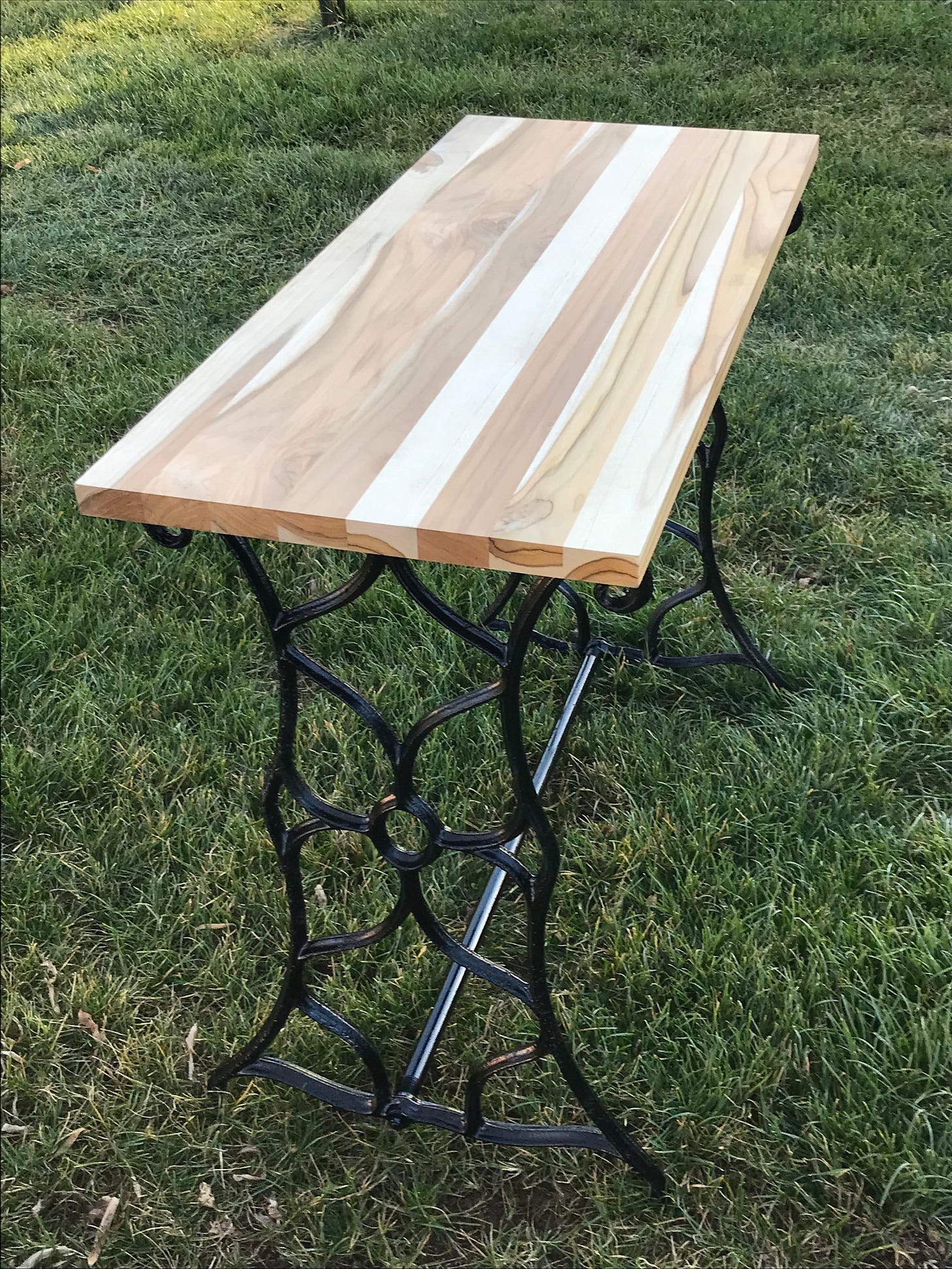
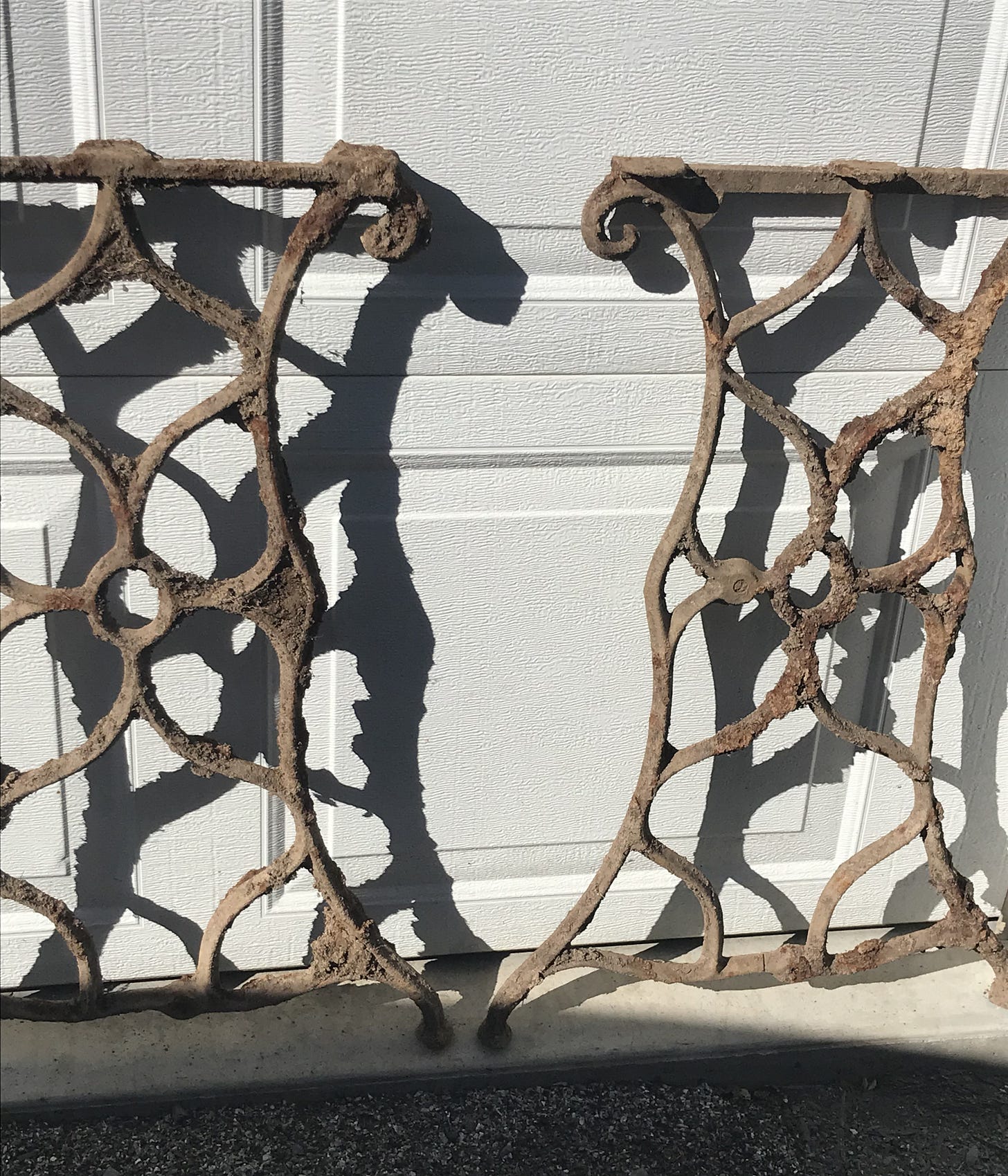
I had no idea that oxen wore shoes until I read this! So interesting!
This was such an interesting post! I'd love to hear more about the conversation you had with the farmer who did the sandblasting for you!